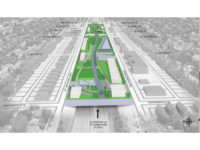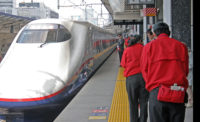The concept of a "critical bridge" is relative. For thousands of daily commuters in a major American city, it might mean a fast way to get home or, at worst, a means of evacuation in a major disaster. For a small rural village in a developing nation, however, a simple rope bridge can be critical—the difference between life and death in a routine medical emergency.
Volunteers with Bridges to Prosperity (BTP) recently completed the group's 100th bridge in 11 years: a 95-meter-long bridge in Nicaragua that will allow 1,200 daily users year-round access to schools, jobs and medical facilities.
"Thousands of bridges are needed throughout the world—footbridges to get kids to school, residents to medical facilities, farmers' crops to market," says Tom Rademacher, Flatiron Construction Co. chief executive officer. "Often when we build, it's dry season, so you think, why can't they navigate the rivers? But the wet season occurs three to six months out of the year. When the river floods, the villagers have to go 20 miles out of the way."
Flatiron has become a major corporate partner of BTP, a sign of the group's growth during the past three years under Executive Director Avery Bang. Bang graduated in 2009 from the University of Colorado at Boulder with a master's degree in geotechnical engineering.
Bang, who worked with Engineers Without Borders' founder Bernard Amadei, says BTP's focus is strictly on bridges in order to accomplish each mission as efficiently as possible.
Her outreach efforts have attracted university volunteers and major firms. For example, Flatiron became a strategic partner and brought in its parent company Hochtief as well as fellow firms, says Rademacher. "I went down to El Salvador and helped build one of the bridges there. It was the best team-building exercise our company has ever done, besides providing to communities throughout the world."
Brittani Russell, a graduate student at the University of Notre Dame, helped build a 125-m-long rope bridge in Nicaragua. A change in the bridge's site location posed design challenges. "We had designed it using the BTP design manual, but there were wind issues because the bridge was so long," she recalls. With the help of a technical mentor, the team modified the original design.
Seven cables were cut into 180-m-long sections and walked across the gorge, wrapped around rebar cages and clamped around themselves. Old tire rims were used as cable saddles. The volunteers also learned about negotiating with different cultures and dealing with meager resources. "If you break a wrench, you can't drive five minutes to a Home Depot," Russell says. "You learn problem-solving skills. You become grateful for the issues you don't have here in the U.S. and for the resources you do have."











